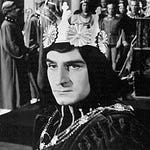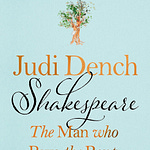I recorded the latest Shakespeare book club, so those of you who cannot make it to the session can watch afterwards. I pressed the wrong button, so it shows the whole screen, rather than just the speaker. I’ll make sure not to do that next time! If you want to watch the video, or join the live session, you can become a paid subscriber for $4 a month. For this piece, I relied on the Arden Introduction, but the Cambridge Introduction is also well-worth your time. As you will see, unlike some of the other “facts” pieces, I have worked in some of my own thoughts too.
For more about this stage in Shakespeare’s career, read this piece.
Shakespeare's first tipping point
This Sunday we are discussing A Midsummer Night’s Dream at 19.00 UK time. Here is the full Shakespeare schedule.
A Midsummer Night’s Dream marks the arrival of magic in Shakespeare’s work. The fairies presage witches, ghosts, spirits, monsters, vasty deeps, and all manner of the weird. Few things have become so fixedly part of the cultural unconscious than Shakespeare’s vision of fairies who combine inexplicably the joy of innocence and the dangers of evil.
This is also the beginning of another truly Shakespearean place: the forest. From here on, pastoral retreat is reshaped from Arden to the island of The Tempest. Deep England, Northrop Frye’s “green world”, animates the Shakespearean imagination very deeply, from the Gloucestershire scenes in Henry IV (so sharp a rendering they are nigh unperformable) to the walking woods of Macbeth.
A Midsummer Night’s Dream is also one of Shakespeare’s most musical plays. There are songs in the play itself, two of which were lost, gone, as Johnson said, after many other things of great value. Music is essential to Shakespeare, not only as a part of the performance, but in the lyricism of his language, both poetry and prose.
When giving a lecture about Othello, W.H. Auden once shuffled on the stage in his slippers, put on a recording of Verdi’s Otello, and sat and listened to it. One could do the same with this play and Mendelssohn.
But many great musicians have been compelled by this play: Duke Ellington named an album after one of its line; progressive rocker Steve Hackett made a Dream suite; Dream has been a musical comedy (Swinging the Dream, 1939), as well as some thirty-nine operas, including one by Britten (1960); there are also several ballets.
Scenes of the Dream have been painted by Reynolds, Fuseli, Blake, and Landseer, among many others. Lewis Carroll counted one-hundred-and-sixty-five fairies in Joseph Paton’s The Quarrel (1849).
What all of this shows is that Dream has become perhaps Shakespeare’s most loved play because it is his most exuberant.
Exuberance is the power of the dream: innocence, revelry, festivity, gaiety. Sir Toby in Twelfth Night scorns Malvolio: “dost thou think that because thou art virtuous there shall be no more cakes and ale?” In the Dream, the scorn becomes manic action. There is no greater power against authority than merry laughter.
This is why Dream has been popular in totalitarian countries: a Nazi prison, Hungary, Lebanon. The Arden editor (whose introduction is splendid throughout), says of Peter Brook’s production in Hungary: “It was a moment’s draught of liberty, smuggled in under the aesthetic cover of theatre.”
C.L. Barber has a strong conclusion about the nature of dream and reality.
Theseus, moreover, does not quite have the last word, even in this play: his position is only one stage in a dialectic. Hippolyta will not be reasoned out of her wonder, and answers her new Lord with
But all the story of the night told over,
And all their minds transfigur’d so together,
More witnesseth than fancy’s images
And grows to something of great constancy;
But howsoever, strange and admirable.
(V.i.23-27)
Did it happen, or didn’t it happen? The doubt is justified by what Shakespeare has shown us. We are not asked to think that fairies exist. But imagination, by presenting these figments, has reached to something, a creative tendency and process. What is this process? Where is it? What shall we call it? It is what happens in the play. It is what happens in marriage. To name it requires many words, words in motion—the words of A Midsummer Night’s Dream.
That last phrase is apt. Dream is a play of constant motion, not only the back-and-forth emotionality of the lover, but literally, on stage, someone should always be moving. Lovers chasing each other or fighting each other; Fairies darting, hiding, sneaking, pranking.
Dream is more than two-thirds verse, about half-and-half rhymed and blank. Ordinary speech, which voices plain statements and simple plot points, rises to some of the loveliest sounding poetry. Lysander, protesting his right against Demetrius is given mellifluous lines. Read these out loud.
I am, my lord, as well derived as he,
As well possess'd; my love is more than his;
My fortunes every way as fairly rank'd,
If not with vantage, as Demetrius';
And, which is more than all these boasts can be,
I am beloved of beauteous Hermia:
Why should not I then prosecute my right?
Demetrius, I'll avouch it to his head,
Made love to Nedar's daughter, Helena,
And won her soul; and she, sweet lady, dotes,
Devoutly dotes, dotes in idolatry,
Upon this spotted and inconstant man.See how the rhetorical tropes are used: the anaphora of “as well… as well” gives way to “my love… my fortunes”. The first line, “I am, my lord” is echoed in the sixth: “I am beloved of beauteous Hermia.” There’s a beautiful simplicity in the alliteration of beloved and beauteous. The short vowel sounds of beloved (eh, uh), become the long sounds of beauteous (ooh, ee). The phrase “beauteous Hermia” is a double dactyl (so it is pronounced beau-te-ous Her-mi-a, dum-dee-dee, dum-dee-dee), a lovely lilting sound. The earlier part of the line is iambic (“I am be-loved) which we expect to carry on (the previous lines are all iambic). So the double dactyl catches the ear with a lover’s swoon. Beautiful irregularity builds to a great crescendo in the closing lines, which can be marked, thus,







